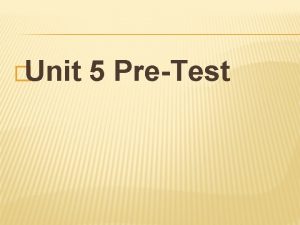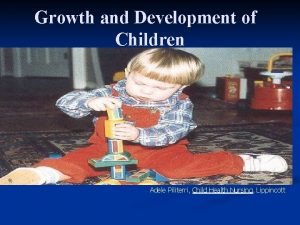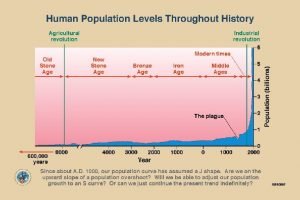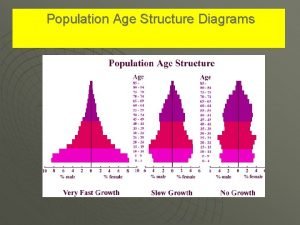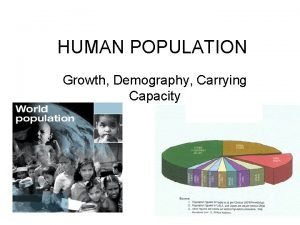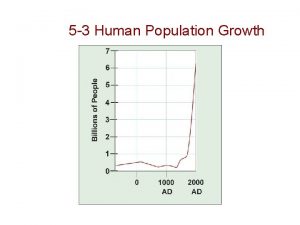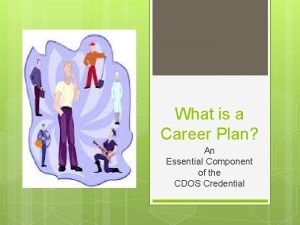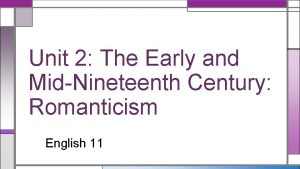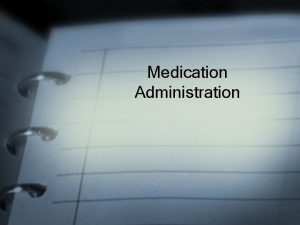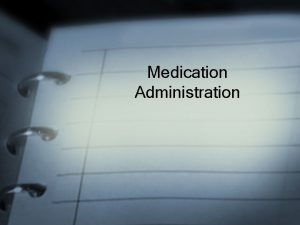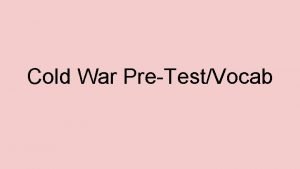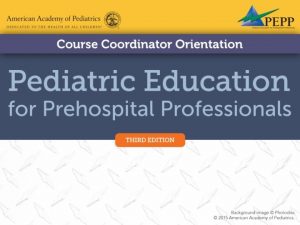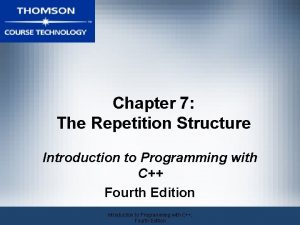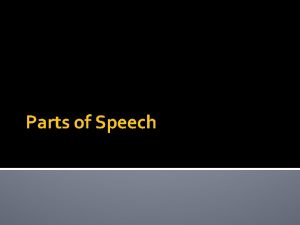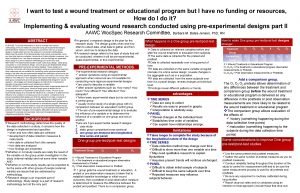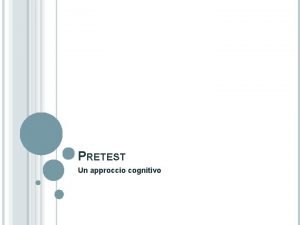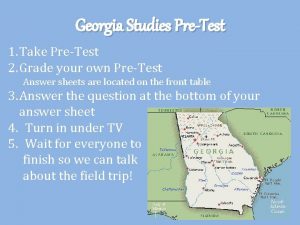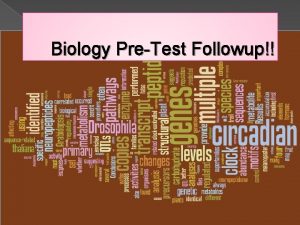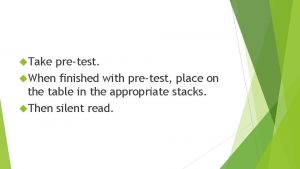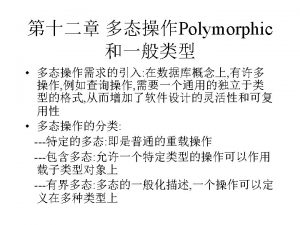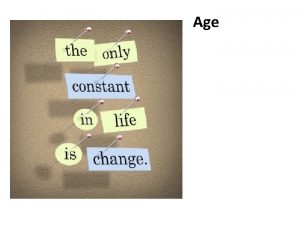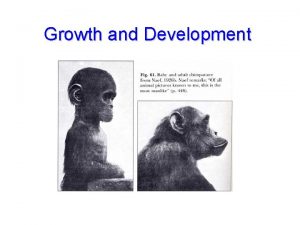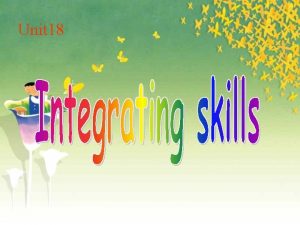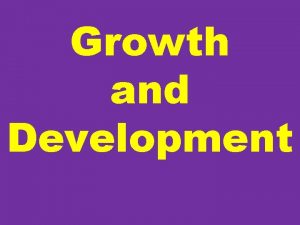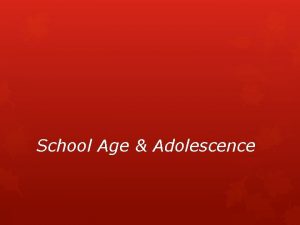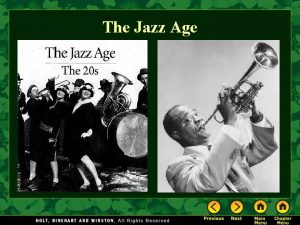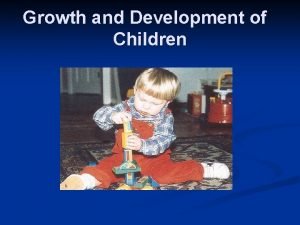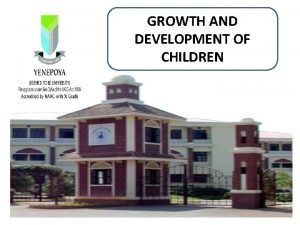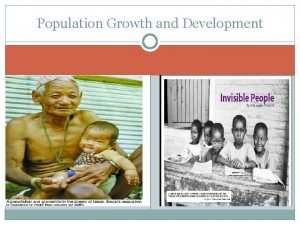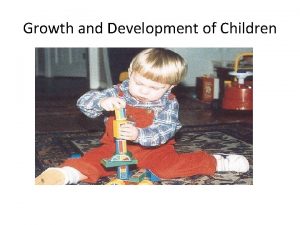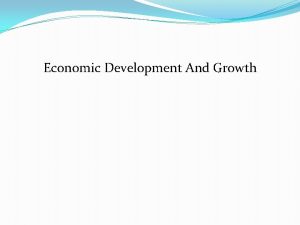Growth Development School Age Unit 5 Pretest 1


































- Slides: 34

Growth & Development School Age

Unit 5 Pretest 1. Which thought process involves logical thinking for the school-age child an understanding of the different stages of development based on the developmental theorists? a. Stage of industry c. Sexual latency b. Concrete operations d. Androgynous

2. In terms of gender identity, some adults develop a concept of gender identity that includes both masculine and feminine qualities. This is known as a. Neutrality b. Assertive sensitivity c. Ambivalence d. Androgynous

3. Nurses can assist parents and children with sex education through careful listening and a. Anticipatory guidance b. Fostering independence c. Constructive criticism d. Strong discipline

4. Latchkey children are those left unsupervised after school because parents or extended family members work outside the home. They are at a higher risk of feeling isolated and subject to a higher rate of a. Study hours b. Accidents c. After-school activities d. Parental supervision

5. At what age do the child’s arms and hands seem to grow faster that the rest of their body? a. 6 years old b. 7 years old c. 8 years old d. 9 years old

6. Which age category is characterized by disorganization and children who are intense, observant, all-knowing, energetic, meddlesome, and argumentative? a. 5 -7 years b. 8 -10 years c. 11 -12 years d. 16 -18 years

7. At what age are hand-eye coordination and fine motor skills well-established and movements graceful and coordinated? a. 4 -6 years b. 6 -8 years c. 8 -10 years d. 10 -12 years

8. Studies have documented that after the age 7, children can be responsible for care of a family pet and that pets a. Are time consuming b. Cause disease c. Prevent disease d. Improve medical outcome after surgery

9. Immunocompromised children are at risk of contracting illnesses spread by some types of animal because the animals cannot be screened for potential pathogens, have few vaccines, and are most likely to transmit disease. For these reasons, which animal below is the best choice of a companion for an immunocompromised child? a. Bird b. Dog c. Turtle d. iguana

10. Although pet ownership may nurture a sense of responsibility and encourage socialization with shy children, which of the following is essential? a. Choosing a shy domestic animal for the family pet b. Selecting an appropriate pet for the family c. Providing exposure to farm animals d. Choosing a puppy younger than 1 year old

SCHOOL AGE – 6 – 12 years old – Begins with entry into formal education – Ends with the onset of puberty

5 Significant Accomplishments – Growth slow & steady – Moves away from the family toward peer relationships – Becomes less self centered & more goal directed – Deciduous teeth lost; permanent appear – Sexual tranquility replaces sexual curiosity & preoccupation

Physical Changes – Slow until spurt directly before puberty – Facial structure – Weight: gain 5. 5– 7 lbs per yr. – 6 year molars erupt – Posture changes – Height: grow 2 in per yr. – Heart smaller in proportion to body size – Brain adult size age 12 – Vital signs – Awkward & clumsy

Age Appropriate Changes 6 year old – Energized – Brief attention span – Bossy – 6 yr molars erupt – Muscle coordination – Talk for a purpose – 11 -13 hrs sleep – Cooperative/imaginative play – Time/support to adjust

Age Appropriate Changes 7 year old – Beginning concept of math – Interest in God & heaven – Stealing may arise *Need not being met *Restitution – Quieter – Set high standards – Good sense of humor – More modest – Enjoy being active but likes periods of rest – Months, seasons, time – “Crush” develops

Age Appropriate Changes 8 year old – Competitive sports but poor losers – Dramatic play; imitate adult roles – Secret clubs – Group activities – Same sex friends – Group fads – Arms/hands grow faster than rest of body – Large/small muscle groups better develop – Cursive writing – Understand number of days

Age Appropriate Changes 9 year old – Dependable – Interest in family activities – More responsibility – Resist adult authority if not coincide with groups opinion – Worries / mild compulsions – Competitive sports – Music interest – Multiply & simple division

Age Appropriate Changes 10 year old – Girls more physically mature – Self direction – Courteous to adults – Independent – Group ideas important – Knows fractions & numbers > 100 – Skill identification to particular gender role – Interest in appearance

Age Appropriate Changes 11– 12 year olds – Energetic - Poor posture – 24 – 26 teeth - Decline in grades – Groups still important - Interest in their body – Act disinterested in opposite sex – Likes to earn money – Seek an adult friend to idolize – Conscience

11– 12 year old guidance It’s TRICKY!!!! 1. Freedom with limits 2. Avoid nagging 3. Allow decision making 4. Have the “talks”

Sex Education Aspects – 7 / 8 yr olds know both sexes for childbirth to occur but not sure how – Continue to be curious about their body – Want the knowledge – Cant answer questions in 3 -4 words – be honest as possible – Not too much in 1 sitting – Their level of understanding

Sex Education Aspects – Correct terms – identify street or slang terms – Comfortable conversation as possible – open talk not preaching / lecturing – Good role model – Boys – erections & nocturnal emissions – Girls – menarche – Body disproportions

Psychosocial Task Industry vs. Inferiority Industry 1. Doing, making himself 2. Enjoys mastering skills 3. Increases competence & productivity 4. Cooperation Inferiority 1. Failure & frustration 2. Viewed as inadequate 3. Not every task successful but success needs to outweigh unsuccessful

Psychosocial Task Industry vs. Inferiority Interventions 1. Encouragement 2. New ideas 3. Experience variety

Psychosexual Development Latency 1. Sexual urges are dormant 2. Focus on peer relationships 3. Learn to live in groups 4. Learning to achieve role of leader or follower

Cognitive Development (Review) Preoperational (age 2 -7) 1. Preconceptual (age 2 -4) a. Language & symbolic functioning b. Egocentric 2. Intuitive thought (age 4 -7) a. Centering b. Capable of some reasoning (prelogical thinking)

Cognitive Development Concrete operational thought a. 7 -11 years old b. Concentrate on > 1 aspect of a situation c. Increased acquisition of cognition 1. Concept of conservation of mass 2. Causation 3. Classification 4. Increased problem solving skills

Cognitive Development Formal operational stage a. 11 -16 years b. Abstract thoughts / concepts c. Increased problem solving skills

Moral Development Pre-conventional 1. 4 -7 years 2. Learns reasoning through demands of obedience Conventional 1. 7 -11 years 2. Rules benefit everyone 3. Seek approval from society

Sibling Rivalry – Competition – Different temperaments & personalities – Levels of development – Different ages – Fills their time

Safety – MVA #1 – Competitive sports – injuries – No fear factor; more motor skills - helmets – Lying / stealing

Play Team Play 1. Rules/Regulation 2. Active & competitive 3. Same gender 4. Based on ability Toys 1. 6 -10 years: bat/ball, sidewalk play, bikes, collections & hobbies 2. 10 -12 years: games, CD’s/DVD’s, science sets

Health Promotion Regular Health Screenings a. Physical Exam b. Assessing Immunization Schedule c. Vision / Hearing d. Dental Hygiene e. Scoliosis
 Pretest growth development and sexuality
Pretest growth development and sexuality Iron age bronze age stone age timeline
Iron age bronze age stone age timeline Iron age bronze age stone age timeline
Iron age bronze age stone age timeline Unit 5 pretest
Unit 5 pretest Piliterri
Piliterri Relative growth rates
Relative growth rates Eudicot
Eudicot Step growth polymerization vs chain growth
Step growth polymerization vs chain growth Primary growth and secondary growth in plants
Primary growth and secondary growth in plants Primary growth and secondary growth in plants
Primary growth and secondary growth in plants Geometric growth vs exponential growth
Geometric growth vs exponential growth Neoclassical growth theory vs. endogenous growth theory
Neoclassical growth theory vs. endogenous growth theory Organic vs inorganic growth
Organic vs inorganic growth Slow growth age structure diagram
Slow growth age structure diagram Carnivorous fish
Carnivorous fish Age structure diagrams
Age structure diagrams Age structure diagram slow growth
Age structure diagram slow growth Slow growth age structure diagram
Slow growth age structure diagram Global population age distribution
Global population age distribution Pretest: developing an academic and career plan
Pretest: developing an academic and career plan Post test the early and mid nineteenth century romanticism
Post test the early and mid nineteenth century romanticism Intravenous medication administration pretest
Intravenous medication administration pretest Concepts of medication administration pretest
Concepts of medication administration pretest Pretest publicitario ejemplo
Pretest publicitario ejemplo Pretest communism and the cold war
Pretest communism and the cold war Proxy pretest design
Proxy pretest design Pepp pretest
Pepp pretest Experimental design xo1
Experimental design xo1 Repetition structure c++
Repetition structure c++ Pretest art in the 20th century and today
Pretest art in the 20th century and today Pretest: the universe
Pretest: the universe Whats a pretest
Whats a pretest Parts of speech fill in the blanks
Parts of speech fill in the blanks Probabilidad pretest angina
Probabilidad pretest angina Wound care pretest
Wound care pretest



